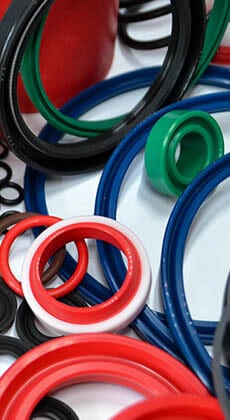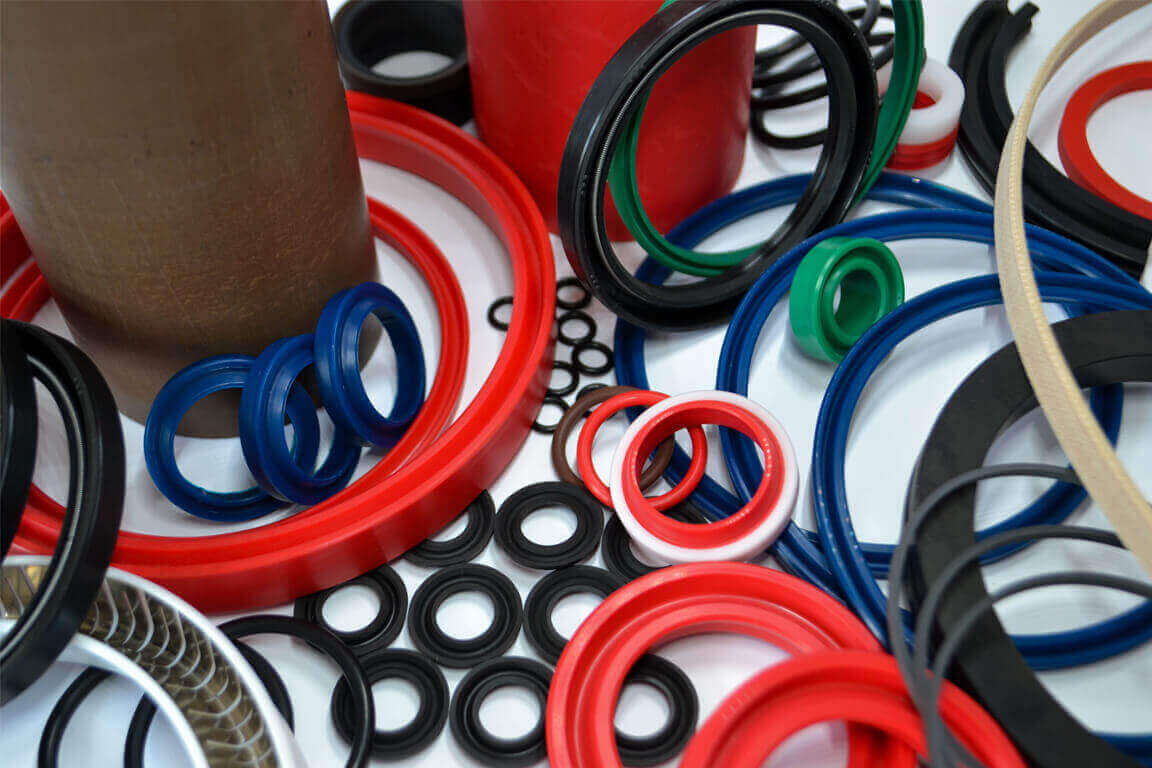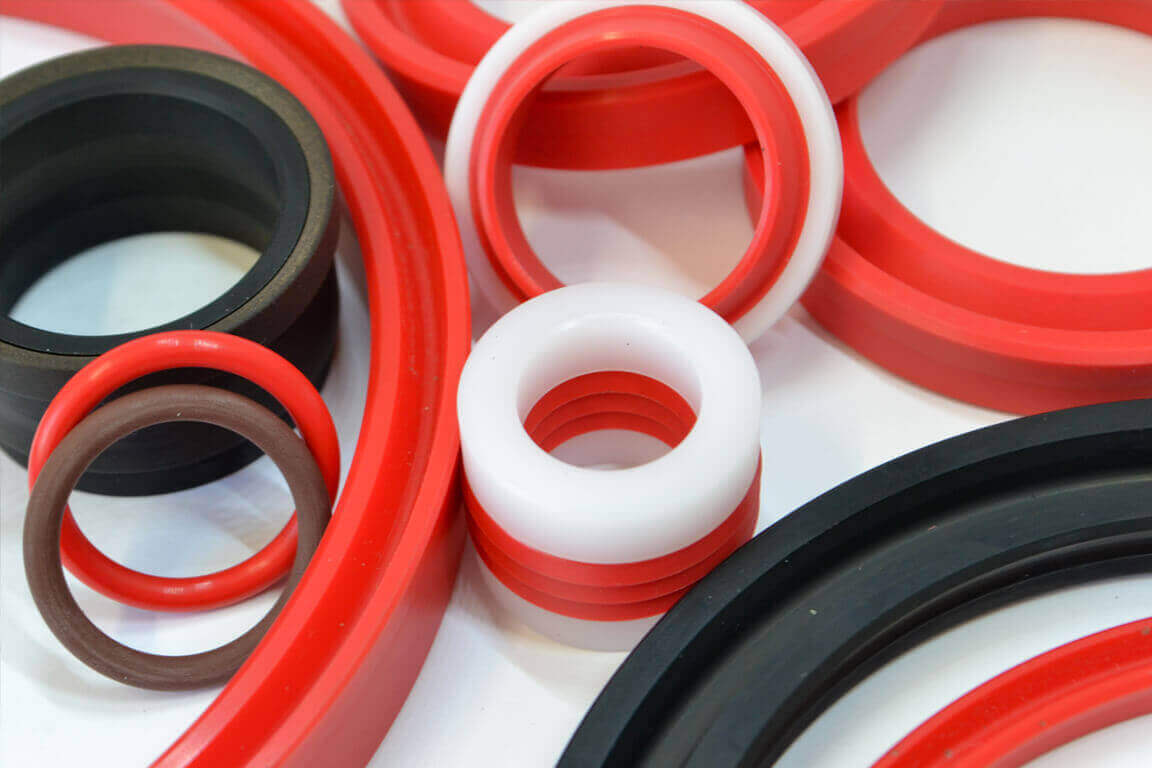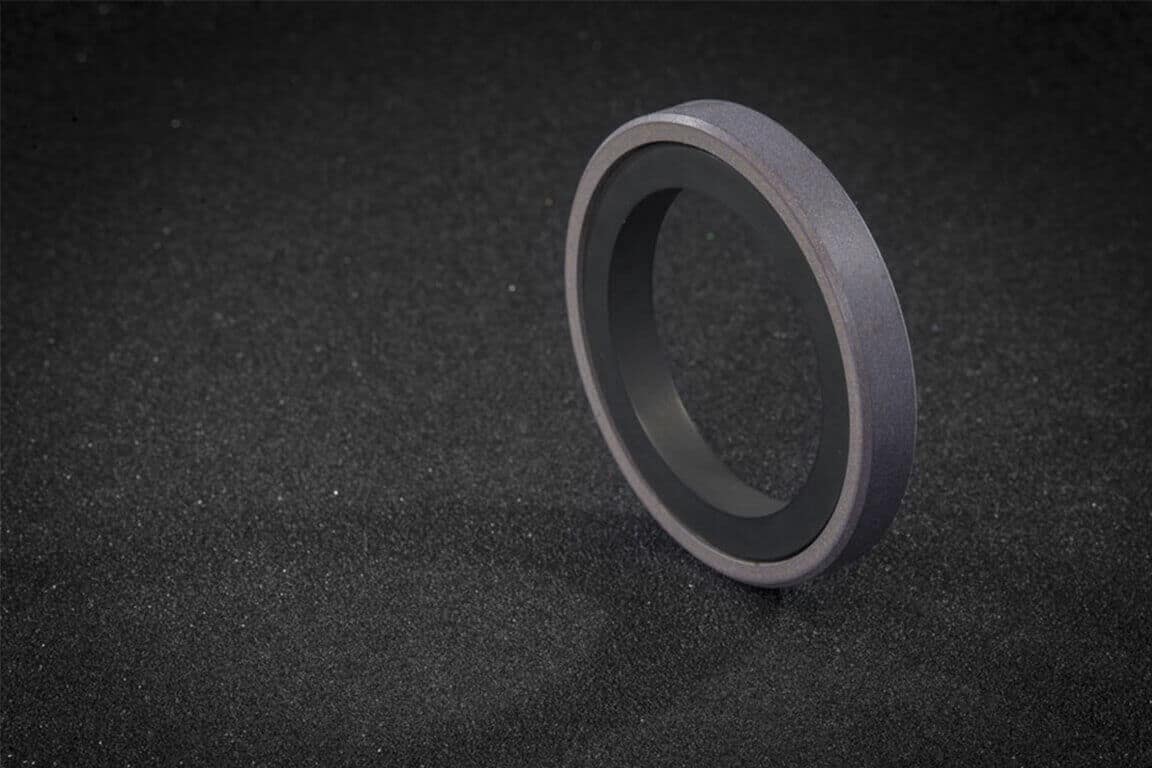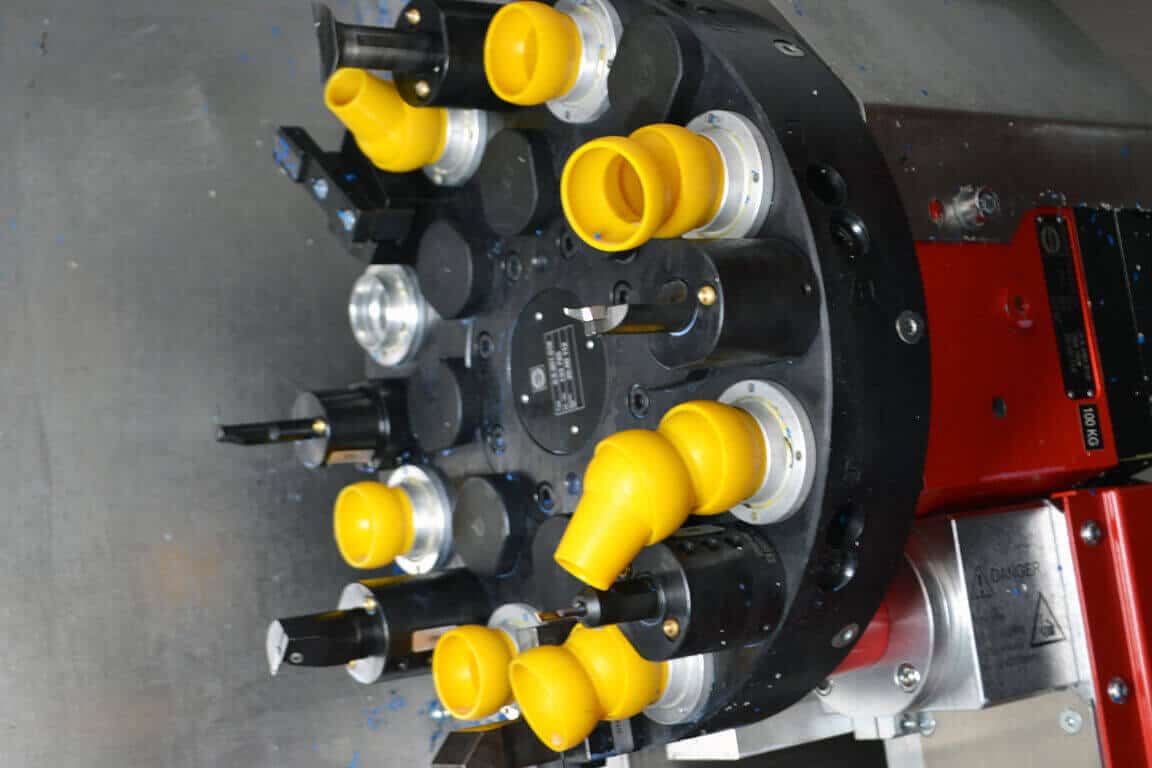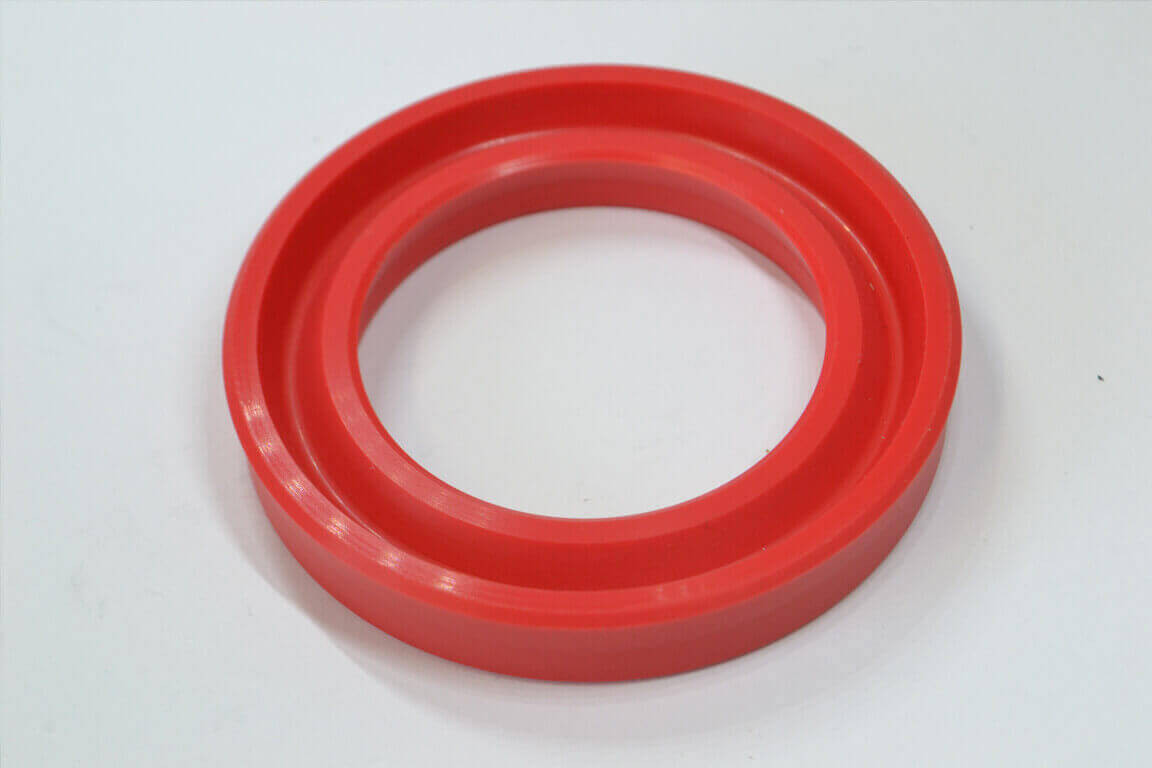Gaskets, sealing elements for hydraulics and pneumatics
We offer a complete range of industrial sealing elements, which are mainly used in the hydraulic and pneumatic field.
In addition to standardized elements, we also offer CNC custom manufacturing, where production is possible from 1 piece up to a diameter of 500 mm.
Seals used in hydraulics and pneumatics that are manufactured in standardized size ranges and materials.
The advantage is the lower price due to the large-scale production. The disadvantage is often a lower availability of pieces and also a limited area of use.
We source from leading European manufacturers and keep the most commonly used types and sizes in stock.
In practice, there are cases when a standardized solution cannot be used for various reasons.
For these situations, we offer the option of CNC production. Production is possible from 1 piece without the need for mould costs etc.
We keep enough starting materials in stock to be able to deal with urgent cases and requirements.
Other hydraulic sealing services
Other services in the field of sealing elements for industrial applications are also an integral part of our offer
Dimensioning of building spaces and design of tailor-made solutions
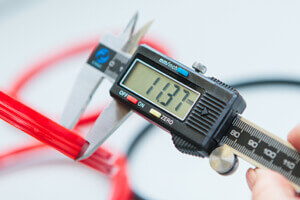
Installation of hydraulic and other seals
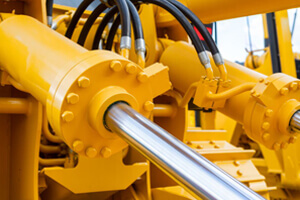
Complete overhaul of hydraulic cylinders

Sealing elements for other industrial applications
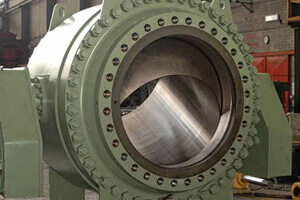
Basic overview of the types of sealing elements offered:
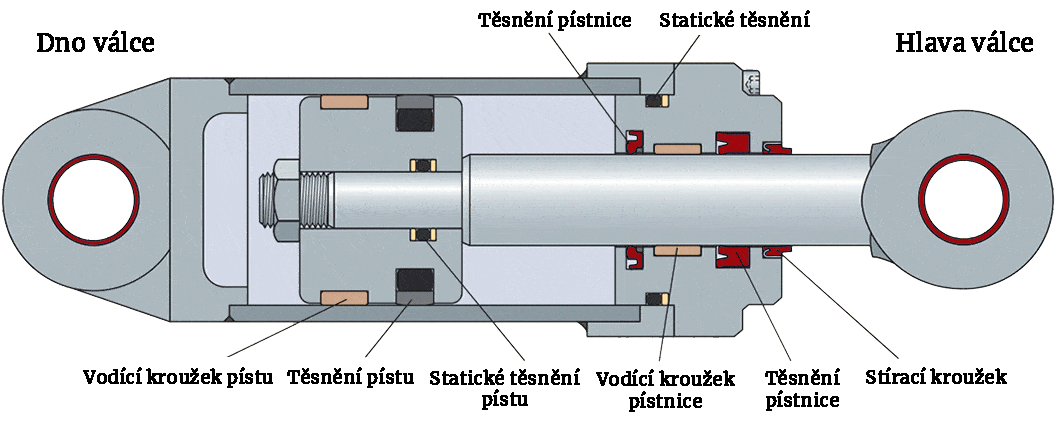
Piston seal
This is usually the main active sealing element. It transfers the pressure caused by the used media to the sliding motion of the piston rod and other downstream parts of the machine. It is mounted on the piston and seals the movement on the outer edge, in the cylinder.

Piston rod seal
The seal that closes the cylinder. Its purpose is to prevent leakage of the medium from the device into the open space or into another part of the device. Primarily designed for sliding movements or in combination with slight rotation. It is located in the cylinder head and seals the movement of the piston rod on the inner blade.
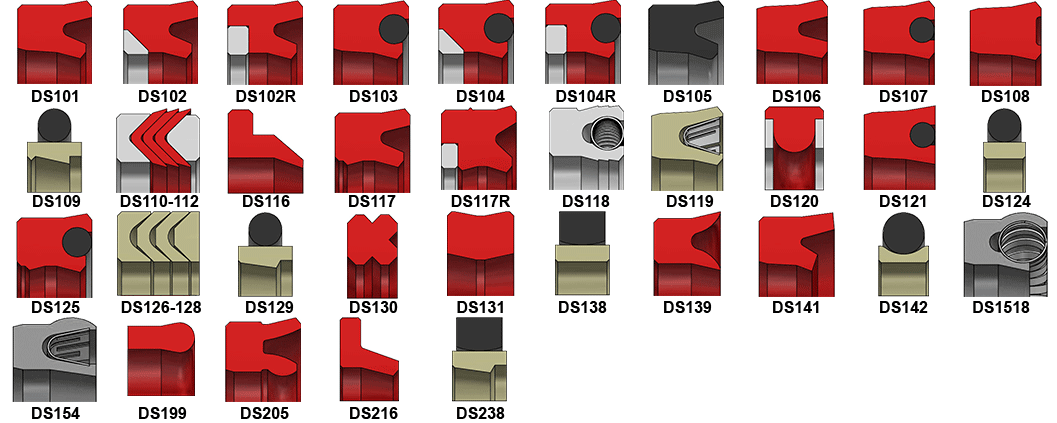
Wiper rings
A sealing element whose primary function is to wipe dirt from the piston rod. It protects the equipment from dirt ingress and thus significantly increases the life of the other seals used and the machine itself.

Guide rings
Their purpose is to define the clearance between the piston and cylinder or piston rod and head. They increase the mechanical resistance of the seals, prevent abrasion of the seals and reduce friction in the equipment.

Support rings
Support rings (usually made of plastic) act as reinforcement rings that increase the pressure and mechanical resistance of O-rings and other seals. They also prevent the seal from entering the joint at larger clearances in the device.

Static seals
Static sealing elements designed to seal non-moving parts. They are primarily used for sealing flanges and cylinder heads.

Rotary sealing elements
Sealing elements designed for rotary motion. These are mainly various motors, rotary converters, distributors, joints and similar devices.

Hydraulic seals – materials used for production
We use a wide range of materials for production. These are mainly H-PU, NBR, FPM, EPDM, POM, PTFE and others.
Below you will find an overview and basic properties of a few selected materials. However, we offer more than 65 material variants.
The material is selected according to the requirements of the application, taking into account the operating temperature, pressure, chemical environment and other parameters.
We also offer materials with FDA approvals and certifications that can be used in e.g. in the food or pharmaceutical industry.
Detailed technical data sheets for all materials are available on request.
| Materiál | Tvrdost | Teplota | Popis a použití | |
|---|---|---|---|---|
 | Polyuretan HPU, FDA červený | 95 ± 2 °Sh.A | -20 ÷ 115 °C | Univerzální materiál, který vyniká svými mechanickými vlastnostmi, odolností vůči opotřebení, teplotám a výbornou obrobitelností. Ve vodě odolný hydrolýze. Vhodný pro minerální oleje a tlakový vzduch. |
 | Polyuretan HPU 55D žlutý | 55 ± 3 °Sh.D | -20 ÷ 115 °C | Univerzální materiál, který vyniká svými mechanickými vlastnostmi, zvýšenou odolností vůči opotřebení, teplotám a výbornou obrobitelností. Ve vodě odolný hydrolýze. Vhodný pro minerální oleje a tlakový vzduch. |
 | Polyuretan SL-PU černý | 96 ± 2 °Sh.A | -20 ÷ 110 °C | Mazivy plněný polyuretan s výbornými mechanickými vlastnostmi a odolností vůči opotřebení. Díky obsahu maziva je zvláště vhodný pro aplikace s omezením mazáním (např. suché pneumatické použití) |
 | Pryž NBR 85 černá | 85 ± 5 °Sh.A | -30 ÷ 110 °C | Pryž odolná minerálním olejům, palivům, rostlinným a živočisným tukům, HFA, HFB a HFC-kapalinám. Disponuje výbornými elastickými vlastnostmi. Není dlouhodě odolná povětrnostním vlivům a ozonu. |
 | Pryž NBR 85 FDA bílá | 85 ± 5 °Sh.A | -30 ÷ 110 °C | Pryž NBR bílé barvy s atestem FDA pro použití např. v potravinářství. Odolná minerálním olejům, palivům, rostlinným a živočisným tukům, HFA, HFB a HFC-kapalinám. Výborné elastické vlastnosti. |
 | Pryž H-NBR 85 zelená | 85 ± 5 °Sh.A | -20 ÷ 150 °C | Pryž NBR se zvýšenou odolností vysokým teplotám a navýšenou otěruvzdorností. Odolná minerálním olejům, palivům, rostlinným a živočisným tukům, HFA, HFB a HFC-kapalinám. Výborné elastické vlastnosti. |
 | Pryž EPDM 85 černá | 85 ± 5 °Sh.A | -45 ÷ 130 °C | Pryžový materiál s výbornou odolností záporným teplotám, stárnutí a povětrnostním vlivům. Odolný alkoholům, alkáliím, kyselinám a dalším látkám. Nevhodný pro ropné produkty, tuky a oleje. |
 | Pryž EPDM 82 FDA bílá | 82 ± 5 °Sh.A | -45 ÷ 130 °C | Pryž EPDM bílé barvy s atestem FDA pro použití např. v potravinářství. Materiál s výbornou odolností záporným teplotám, stárnutí a povětrnostním vlivům. Odolný alkoholům, alkáliím, kyselinám a dalším látkám. |
 | Pryž FPM hnědá | 82 ± 5 °Sh.A | -20 ÷ 220 °C | Materiál s velmi vysokou teplotní odolností a výbornou chemickou odolností i proti agresivním chemikáliím. Nevhodná pro použití u horké vody. |
 | Pryž Silikon modrá | 85 ± 5 °Sh.A | -60 ÷ 200 °C | Pryžový materiál s výbornou teplotní odolností, vysokou flexibilitou i při nízkých teplotách a odolností vůči atmosferickým vlivům a stárnutí. Nulový vliv na chuť i vůni média - často využíván v potravinářství. |
 | Pryž Silikon FDA bílá | 85 ± 5 °Sh.A | -60 ÷ 200 °C | Silikonová pryž v bílé barvě s atestem FDA. Pryžový materiál s výbornou teplotní odolností, vysokou flexibilitou i při nízkých teplotách a odolností vůči atmosferickým vlivům a stárnutí. Nulový vliv na chuť i vůni média. |
 | PTFE virgin bílá | 55 ± 3 °Sh.D | -200 ÷ 260 °C | Materiál s výjimečnou chemickou a teplotní odolností a výbornými kluznými vlastnostmi. Má atest FDA a lze tak použít v potravinářství. Nejčastěji je využíván pro vodící a opěrné kroužky. |
 | PTFE + 40% bronz hnědá | 60 ± 3 °Sh.D | -200 ÷ 260 °C | PTFE plněný ze 40% bronzem. Díky této přímesi je dosaženo zvýšené pevnosti tlaku, tepelné vodivosti a vyšší odolnosti extruzi. Jde o nejčastěji používanou PTFE směs pro výrobu hydraulického těsnění. |
 | PTFE + 25% uhlík šedá | 65 ± 3 °Sh.D | -200 ÷ 260 °C | PTFE plněný z 25% uhlíkem. Příměs uhlíku zvyšuje tvrdost, odolnost proti tečení, otěruvzdornost a tepelnou vodivost materiálu. Částečně samomazný. |
 | PTFE PEEK béžová | 60 ± 3 °Sh.D | -200 ÷ 260 °C | PTFE plněný z 10% PEEK. Výborná odolnost otěru a extruzi, zvláště v aplikacích s minimem maziva. Materiál má FDA atest. |
 | POM bílá | 81 ± 3 °Sh.D | -45 ÷ 100 °C | Materiál s výbornými mechanickými vlastnostmi, vysokou tvrdostí, tvarovou stálostí a velkou odolností otěru. Využíván především pro výrobu opěrných a vodících kroužků. |
 | PA bílá | 79 ± 3 °Sh.D | -40 ÷ 110 °C | Polyamid PA vyniká mechanickými vlastnostmi, otěruvzdorností a kluznými vlastnostmi. Nevýhodou je poměrně vysoká nasákavost vodou. |
 | PE-UHMW bílá | 61 ± 3 °Sh.D | -200 ÷ 80 °C | Vysokomolekulární polyetylen je materiál s vysokou odolností otěru, opotřebení a dobrými kluznými vlastnostmi. Výborná odolnost záporným teplotám. |
Examples of finished products and production process
For more information on hydraulic seals, see for example this resource.
We keep sufficient quantities of long term items in stock and are thus able to respond flexibly and very quickly to current requirements or urgent delivery needs. We also maintain an extensive stock of raw blanks and materials used in production. Thanks to this, we are able to solve even urgent cases efficiently and we are able to carry out production within hours.
In the case of long-term cooperation, we offer our customers not only quantity discounts but also other preferential business conditions.
Seal design and mechanics – basic information
When designing a solution, several factors must be taken into account to determine the ideal choice of profile and material.
These are mainly pressure, temperature, speed, chemical environment, friction, method of treatment of functional surfaces and other factors.
Based on these factors, we select the sealing element that ideally meets the requirements of the application and guarantees a high sealing effect and durability.
Surface quality requirements for functional areas
Particular attention should be paid to the surface design of the functional surfaces.
The purpose is to ensure a surface quality that minimizes abrasion and wear on the seal.
The piston rod seal, which seals against the moving surface, can be damaged by fine abrasive particles which may adhere to the rough surface. Therefore, the bars should have a low surface roughness value, and the surface should be similar to hard chrome and rust-proof. The ideal surface roughness is somewhere around 0.3 µm (Ra) or 2.3 µm (Rt).
The piston seal, which seals against the inner surface of the cylinder, is not exposed to the same range of abrasive particles entering from the atmosphere and can therefore handle rougher surfaces. The ideal surface roughness is somewhere around 0.5 µm (Ra) or 3.7 µm (Rt). The operating pressure must be taken into account when assessing the surface properties. At higher operating pressures, the film between the seal and the sealing surface is thinner and friction is greater. Under such operating conditions, the least possible surface roughness should be selected.
The surface quality for static sealing should be around 1 µm (Ra) or 7 µm (Rt).
Detailed information on construction, design and other technical information can be found in our catalogue.
Offering a related range and combination of technologies
In addition to the manufacture and sale of sealing elements for hydraulic and pneumatic applications, we also offer other products and services.
These are mainly flat seals, rubbers, rubber profiles, mechanical seals, sealing cords and other products.
Thanks to this, we can provide effective solutions even for complex assemblies where the sealing of the equipment must be solved by combining different elements and using different production technologies.
